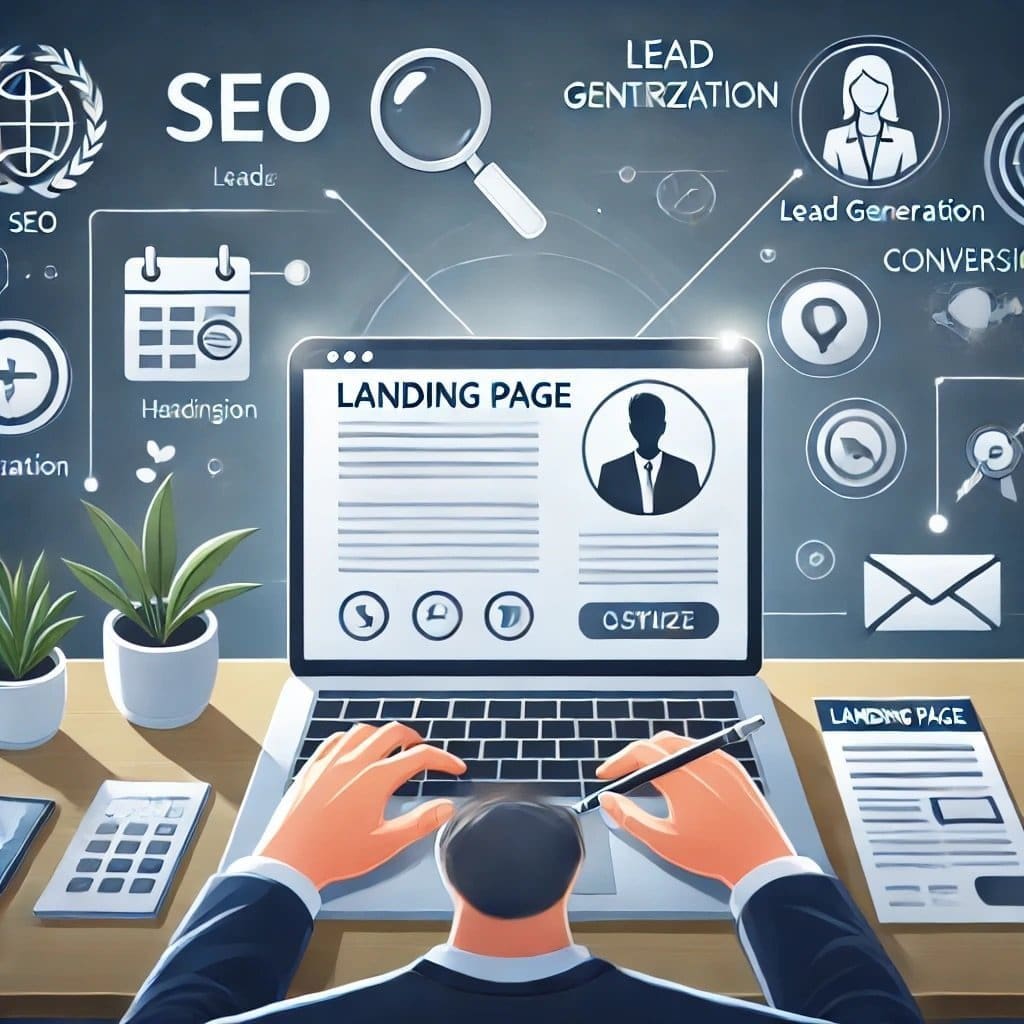A well-designed landing page can be one of the most effective tools for generating leads and driving conversions. Whether you’re launching a new product, promoting a service, or running a campaign, the landing page is where potential customers take action. Here’s how to create a landing page that converts, followed by strategies to optimize it for better performance.
What is a Landing Page?
A landing page is a standalone web page designed with a single focus or goal, typically used in marketing campaigns. Unlike a homepage, which might provide general information about a business, landing pages are tailored to guide visitors toward a specific action, such as signing up for a newsletter, purchasing a product, or downloading an e-book.
Key Elements of an Effective Landing Page
1. Compelling Headline
Your headline is the first thing visitors see, so it needs to grab attention immediately. A strong headline should communicate the value proposition clearly and succinctly. It should be benefit-driven, focusing on what the user will gain.
Example: “Get 50% Off Your First Order of Healthy Meals Delivered to Your Door!”
2. Engaging Copy
The body copy should expand on the headline, providing more details about the offer, product, or service. Keep the copy concise and focused on the benefits. Address the visitor’s pain points and explain how your solution can solve their problems.
Use bullet points for easy readability and avoid jargon or overly technical language that might confuse visitors.
3. Call-to-Action (CTA)
The CTA is the most critical part of your landing page. It’s the action you want your visitors to take, such as “Buy Now,” “Sign Up,” or “Download.” The CTA should be clear, visible, and aligned with the user’s intent. Make sure the CTA button stands out through the use of contrasting colors and placement.
4. Visual Elements
Visuals such as images, graphics, or videos can increase engagement and enhance the message of your landing page. Use high-quality images that are relevant to the offer, and consider adding product demos or customer testimonials to increase credibility.
5. Lead Capture Form
If your goal is to capture leads, include a form that asks for the visitor’s information, such as name and email address. Keep the form simple—only ask for essential information to avoid overwhelming the visitor. The fewer fields you require, the more likely people will fill it out.
6. Trust Signals
Build credibility with trust signals such as customer reviews, testimonials, security badges, or logos of well-known clients. Trust signals help reduce the perceived risk for visitors, making them more comfortable completing the action.
7. Mobile Optimization
With a growing number of users browsing on mobile devices, it’s crucial to optimize your landing page for mobile. Ensure the page loads quickly, is easy to navigate, and that the CTA is prominent on smaller screens.
How to Optimize Your Landing Pages
Creating the landing page is only the first step. Optimization is key to improving its performance and increasing conversions. Here are some strategies to optimize your landing pages for maximum effectiveness:
1. A/B Testing
Run A/B tests on different elements of your landing page, such as headlines, CTAs, images, and layout. Testing helps you determine which version of the page performs better in terms of conversions. For example, you can test whether a red CTA button performs better than a green one.
2. Optimize for SEO
While landing pages are typically used in paid campaigns, optimizing them for search engines can help drive organic traffic as well. Use relevant keywords in your headline, copy, and meta descriptions. Also, ensure that the page loads quickly, as page speed is an essential factor in SEO rankings.
3. Improve Page Load Speed
Slow loading pages lead to higher bounce rates. Use tools like Google PageSpeed Insights to assess your page’s speed and identify areas for improvement. Compress images, minimize code, and leverage browser caching to ensure a faster experience for users.
4. Enhance Your CTA
The language of your CTA matters. Instead of generic phrases like “Submit,” use more action-oriented phrases that emphasize value, such as “Get My Free Guide” or “Start My Trial.” Make sure the CTA button is placed in a prominent location, ideally above the fold.
5. Use Social Proof
Incorporating social proof, such as customer testimonials or case studies, can significantly impact your landing page’s credibility. Showcase positive reviews or stats that demonstrate the success of your product or service.
6. Reduce Distractions
Landing pages work best when they are laser-focused on a single goal. Remove any unnecessary navigation links, sidebars, or clutter that could distract visitors from taking the desired action. The more streamlined your page, the better it will convert.
7. Retargeting
Use retargeting strategies to bring back visitors who didn’t convert the first time. Retargeting ads can remind potential customers about your offer and bring them back to complete the action.
Conclusion
A well-crafted landing page can be a powerful tool for capturing leads and driving conversions. By focusing on key elements like compelling headlines, clear CTAs, and trust signals, and then optimizing through A/B testing and speed improvements, you can significantly enhance your landing page’s effectiveness. Whether you’re running paid ads, email campaigns, or organic search traffic, optimizing your landing pages can help turn visitors into customers and boost your overall marketing success.


7 comments